Modern smartphones provide amazing mobile computer information to help you get your job done in the office, on the field, and wherever you are. Sure, people have different mobile needs, but every smartphone on this list goes beyond being able to provide all the essential functions that most users would want on a cell phone.
Some smartphones are great for photography, some phones can work as a small tablets, and some are strong enough to withstand falling down. The word "best" may understand your needs, but some smartphones are actually better than others.
These are the top 10 smartphones we currently recommend as the best.
Display: 6.7-inch OLED (2,778 x 1,284-pixel resolution) at 458 ppi | CPU: Apple A15 Bionic chip | RAM: TBD | Internal Storage: 128GB, 256GB, 512GB, 1TB | Rear cameras: 12MP wide, 12MP ultra-wide (120-degree field of view), 12MP telephoto (6x optical
Image: Apple zoom) | Front camera: 12MP
Apple's largest and richest iPhone is the mouthpiece, the iPhone 13 Pro Max. Apple listened to customers, and while the phone looks a bit like last year's 12 Pro Max, it is thicker with a stronger battery and longer battery life.
The display now supports a refresh rate of up to 120Hz while the optical zoom on the telephoto camera is upgraded to 6x. Capturing great images and video modes are new features in the camera system that ensure pleasing photographers and videographers alike.
Apple continues to actively upgrade iOS 15 while providing 1TB of internal storage so you can capture content in a way that pleases your heart.
The iPhone 13 Pro Max price starts at $1,099 for the 128GB model and ranges up to $1,599 for the 1TB storage capacity. The iPhone 13 Pro Max is available in graphite, silver, gold, and sierra blue.
Pros:
- High-quality ceramic glass and stainless steel materials
- Best video recording performance
- High-quality cameras
- Stable and well supported by Apple
Cons:
Main display: 7.6 inches (2,208 x 1,768-pixel resolution) Dynamic 120Hz AMOLED | Cover display: 6.2 inches (832 x 2,268-pixel resolution) AMOLED | CPU: Qualcomm Snapdragon 888 | RAM: 12GB LPDDR5 | Internal Storage: 256GB/512GB, UFS 3.1 Image: Samsung
| Rear cameras: 12MP rear f/2.4 telephoto, 12MP f/1.8 wide-angle, and 12MP f/2.2 ultra-wide cameras (123-degree field-of-view) | Front cameras: 10MP f/2.2 camera on the cover display and 4MP camera under the main display | Weight: 271g
While I listed the iPhone 13 Pro Max as the best phone overall, the Galaxy Z Fold 3 is the best overall production phone. The addition of the S Pen support and the waterproof IPX8 design make the Z Fold 3 the smallest phone and tablet I can ask for, and it is very well developed to get the job done on the go.
With excellent pre-launch offers and trading deals, I purchased a 512GB model to operate as my daily driver. In addition to the development of computer hardware, Samsung made the purchase a little easier by reducing the price by $ 200 compared to the previous Z Fold 2.
The Galaxy Z Fold 3 works like a very capable smartphone and a small tablet, providing a very strong and fast 5G connection in both ways. The outdoor display offers a typical 6.2-inch smartphone experience with the addition of a 120Hz update rate this year. The large 7.6-inch display is stunning with a 120Hz refresh rate, Samsung's lovely AMOLED technology, and special S Pen support. What would be best for Notify and folding fans?
You get fast RAM with internal speed available, S Pen support, water resistance, triple rear cameras, 10MP front camera, unique 4MP under-display camera, and much more. A 4,400mAh battery easily leads you to a full day, even if you use a large screen.
Pros:
- Stunning engineering marvel
- Incredible AMOLED displays
- S Pen support
- IPX8 water resistance
- Software optimizations for foldable and large display usage
Cons:
- Expensive
- No S Pen support on cover screen
- Not the best Samsung cameras on the back
Display: 6.7-inch LTPO OLED (3,120 x 1,440-pixel resolution) | CPU: Google Tensor | RAM: 12GB | Internal Storage: 128GB, 256GB, 512GB | Rear cameras: 50MP wide, 12MP ultra-wide (114-degree field of view), 48MP telephoto (4x optical zoom) | Front camera: 11.1MP | Weight: 210g | Dust/water resistance: IP68 Image: Google
Google's Pixel 6 Pro is the best smartphone available at Google right now. The Pixel 6 has a lot of similar specifications, with one small rear camera and a smaller display: Pixel 6 and 6 Pro sports Google's new Tensor Processor.
The Pixel 6 Pro is a flagship competitor and starts at $ 899 for the 128GB model, while the 512GB model has a price tag of $ 1,099. You can buy one in Stormy Black, Cloudy White, or Sorta Sunny with limited storage capacity with different colour options.
Apparently, the cameras are very focused on the Pixel 6 Pro with Google's amazing software, integrated with the advanced computer hardware, to argue that the smartphone camera available today is the best.
In addition to camera expertise, the phone is guaranteed to get standard and timely software and firmware updates for years, similar to what Apple offers to iPhone owners. The phone is also powered by Android 12 with many settings for personal information.
Pros:
- Fantastic camera experiences
- Optimized Android 12 interface
- Timely updates and support for years
- Unique hardware design
Cons:
- Average battery life
- Boxier, larger design is not the most comfortable to hold
- RF performance is not as good as Samsung
Display: 6.1-inch (2,532 x 1,170-pixel resolution ) OLED | CPU: Apple A15 Bionic | Internal Storage: 128GB, 256GB, 512GB | Rear cameras: 12MP wide, 12MP ultrawide (120-degree field of view) | Front camera: 12MP | Weight: 174g | Dust/water resistance: IP68
Image: Apple
While the iPhone 13 Pro Max is obviously the best iPhone 13 model available, it is also a great smartphone with a high price tag. The iPhone 13 is a clear winner for most people, with an initial price of $ 799 and six colour options.
The Apple iPhone 13 is an exciting device as it has a 6.1-inch display on the iPhone 13 Pro, so the size and capacity of the battery are no different here. There is one small rear camera on the iPhone 13, and no LiDAR scanner support. If the telephoto ability is not important to you, you can save money with the iPhone 13, and it supports 2x optical with existing cameras.
it is good to finally see Apple start with a 128GB base model instead of charging people with the right amount of internal storage if the focus is too much on-camera power. The phone also supports Apple's new Cinematic mode for video recording.
The iPhone 13 is 0.25mm thick and weighs 10 grams more than the iPhone 12, but users are sure to enjoy the improved battery life that comes with more depth.
Pros:
- Fast, reliable, and well supported
- Good quality cameras
- Attractive and fun colour options
- Tons of accessories, including MagSafe
Cons:
- No high refresh rate display as seen on Pro models
- No dedicated telephoto camera
Display: 6.2 inches (2,400 x 1,080-pixel resolution) 120Hz Infinity-O AMOLED | CPU: Qualcomm Snapdragon 888 | RAM: 8GB LPDDR5 | Internal Storage: 128GB, 256GB | Rear cameras: 64MP rear f/2.0 telephoto, 12MP f/1.8 wide-angle camera, and 12MP f/2.2 ultra-
Image: Samsung
wide camera (120-degree field-of-view) | Front camera: 10MP f/2.2 camera | Weight: 169g | Dust/water resistance: IP68
The Samsung Galaxy S21 was launched in January 2021 but remains the top rival of the Samsung Galaxy - and some would argue, the leading Android - the most popular phone. But unlike its older siblings, the Galaxy S21 Ultra and the Z Fold 3, what makes the S21 different is not just based on risk and brawn. The whole package - a combination of high-quality interior and "glass" (Samsung's plastic label that sounds like glass) - makes the S21 the ideal phone for many.
In a market full of large handles, the Galaxy S21 only plays a 6.2-inch panel with the same beautiful bezels, making it easy to hold and use with one hand. You won’t find the same unless you pick up an iPhone 12 or 13 mini, or a Galaxy Z Flip. However, Samsung managed to insert a 4,000mAh powerful battery into the S21 and Qualcomm's latest Snapdragon 888 processor to power the device.
So what are the obstacles? After all, the phone is much cheaper than other 2021 options from Samsung. Yes, for $ 799.99 (plus regular upgrades), the Galaxy S21 actually cuts smaller corners than you think. The support, too, is made of glass, so it doesn't glaze or be premia like that of the S21 + and S21 Ultra, the display goes up to 1,080p resolution, the cameras don't shine like their siblings, and there's no charging. brick in a box. If you can handle those hurdles - which I assure you, will not affect the full range of mobile information - then the S21 is the unthinkable choice of the Samsung Galaxy leading many people.
Pros:
- Small size in a sea of large slabs
- Affordable and colourful
- 5G support for all bands
- High-end internal specifications
Cons:
- No charger in the box
- No MicroSD card slot
Display: 6.9 inches (3,088 x 1,440-pixel resolution) 120Hz Infinity-O AMOLED | CPU: Qualcomm Snapdragon 865 Plus | RAM: 12GB LPDDR5 | Internal Storage: 128GB storage (with microSD card) | Rear cameras: 12MP rear f/3.0 telephoto, 108MP f/1.8 wide-angle
Image: Samsung
camera, and 12MP f/2.2 ultra-wide camera (120-degree field-of-view) | Front camera: 10MP f/2.2 camera | Weight: 208g | Dust/water resistance: IP68
This section may be slightly controversial as Samsung has added S Pen support to the S21 Ultra and Z Fold 3, but there is no S Pen cell on any phone. It is an additional service of these devices, and the difficulty of navigating it makes it much easier than the Note series. It is not yet clear if we will see another Note from Samsung either.
Samsung announced the Galaxy Note 20 series last fall, and it is clear that the Galaxy Note 20 Ultra is one of the best production smartphones with a simple recommendation for those who love the S Pen.
The Galaxy Note 20 devices bring everything we have seen in the Galaxy S20 series with some improvements to the cameras. After all, the S Pen is the basis of the Note series, and with Note 20, we see more Spiritual Actions that seem useful and reliable this year. Although the LG has strong stylus support, nothing more than the performance and capability of the S Pen. It is also integrated into the Galaxy Note 20 Ultra 5G, making it easily accessible for day-to-day use.
Pros:
- Complete S Pen support with silo on the device
- Incredible AMOLED displays
- IP68 dust and water resistance
- High-quality cameras
Cons:
Display: 6.34 inches (2,400 x 1,080-pixel resolution) OLED | CPU: Qualcomm Snapdragon 765G | RAM: 6GB | Internal Storage: 128GB | Rear cameras: 12.2MP rear f/1.7 and 16MP f/2.2 ultra-wide (107-degree field-of-view) | Front camera: 8MP f/2.0 | Weight: 168g
Image: Google
Google Pixel 4A 5G was a good 5G phone, but by 2021 Google was replacing it with 5A 5G which offers more and has a value of $ 50 less. At $ 449, it is one of the cheapest 5G phones we have ever seen released, and it includes advanced features such as IP67 dust/water resistance and metal unibody design.
In addition to the fact that the software is Google-focused, the camera is another reason to buy the Pixel 5A 5G more than any other, better smartphone hardware. However, while some have three or four rear cameras, Google offers only two cameras, so there are some limitations to its capabilities as a daily shooter.
The all-new Android 12 enables the phone and you can expect a stable OS upgrade for three years. Monthly Android security updates are the most important business software support, as major firmware updates often break things down and become unstable immediately after release.
Pros:
- Google Pixel camera is fantastic
- 5G support
- Affordable
- Long battery life
- Timely updates and years of support
Cons:
- Limited RAM and storage
- Reports of overheating with extended camera use
Display: 6.8 inches (3,200 x 1,440-pixel resolution) 120Hz Infinity-O AMOLED | CPU: Qualcomm Snapdragon 888 | RAM: 12GB/16GB LPDDR5 | Internal Storage: 128GB/256GB/512GB | Rear cameras: 10MP rear f/4.9 telephoto with 10x optical zoom
Image: Samsung
and second 10MP f/2.4 telephoto with 3x optical zoom, 108MP wide-angle camera, and 12MP f/2.2 ultra-wide camera (120-degree field-of-view) | Front camera: 40MP f/2.2 camera | Weight: 229g | Dust/water resistance: IP68
Samsung's Galaxy S21 Ultra 5G is one of the best smartphones today and Samsung has to offer for camera performance. With a $ 200 initial price cut, compared to the Galaxy S20 Ultra, the phone is also one of the most affordable flagship offerings.
In addition to the latest and greatest specifications, the S21 Ultra 5G provides support for the Samsung S Pen, so you are no longer limited to the Note line only if you need paint support.
If your job requires you to zoom in on distance, there is no other phone better than the S21 Ultra in terms of telephoto power and quality. Up to 30x zoom provides good quality images, but beyond this zoom level, there are real reasons to see the details of the topics you are photographing.
Pros:
- High quality and capable quad-camera system
- Best telephoto shooter available
- S Pen support
- Incredible AMOLED displays
- More affordable than the S20 series
Cons:
Display: 6.7 inches (3,216 x 1,440-pixel resolution) 120Hz AMOLED | CPU: Qualcomm Snapdragon 888 | RAM: 8GB/12GB LPDDR5 | Internal Storage: 128GB/256GB | Rear cameras: 8MP rear f/2.4 telephoto, 48MP f/1.8 wide-angle camera, and 50MP f/2.2 ultra-wide
Image: OnePlus
camera, 2MP monochrome camera | Front camera: 16MP f/2.4 camera | Weight: 197g
OnePlus used to be a "flag-killing" product but has since evolved into more expensive flags that challenge the likes of Samsung and Apple. Compared to Samsung, the OnePlus offers ads-free information and bloatware while now offering exciting features such as wireless charging and the flexibility of 120Hz.
The OnePlus 9 Pro is priced at $ 200 less than Samsung's S21 Ultra, which is significant considering that Samsung's price is also less than $ 200 than its 2020 launch price. For less than $ 1,000, the OnePlus 9 Pro is the most important smartphone to consider.
Hasselblad Camera Collaboration was a great place to be introduced and integrated into the launch event but understands that only software enhancements are available on this first Hasselblad brand with it. That being said, the camera performance has been better and clearly improved than what OnePlus has provided in the past.
One place OnePlus leads the pack of charging power for its phones. Warp Charge 65T support and Warp Charge Wireless 50 support are provided in OnePlus 9 Pro. This means you can charge your phone from 1% to 100% in just 29 minutes. Wireless charging achieves even this 43-minute charging performance, faster than wireless charging on many other phones.
- Lovely, high-quality design
- Ultra-fast wireless and wired charging capability
- Outstanding specifications
- Capable cameras
Cons:
- Expensive
- Hasselblad partnership in its infancy
- Software experience is ever-changing
Now Author's Favourite:
Displays: Two 5.8 inch (1,892 x 1,344-pixel resolution) AMOLED | CPU: Qualcomm Snapdragon 888 | RAM: 8GB | Internal Storage: 128GB/256GB/512GB | Cameras: 12MP f/21.7 wide, 12MP f/2.4 telephoto with 2x optical, and 16MP f/2.2 ultra-wide (110-degrees field-of-view). 12MP f/2.0 front-facing camera | Weight: 284g
The original Surface Duo was plagued by old and missing basic specifications while introducing a different version that was more than just a smartphone. Microsoft is listening for feedback and is making significant improvements to this year's specifications so that the Surface Duo 2 is in line with some of the best smartphones by 2021.
However, the focus on this phone is still in production and is perfect for those who do a lot of work and need to use two apps at once. Microsoft's problem is whether there is a stable market for a device that is similar to these specific customers.
The issue is not just about the advanced hardware, however, and the power of this smartphone lies in the software development provided by Microsoft. There have been a few updates to the original Duo, but that device still uses Android 10, with Android 12 now available on new smartphones. The first $ 1,500 price tag is hard to swallow, but we will probably soon see the sale of fire in this second generation as we have seen in the first generation.
Pros:
- High-quality hardware
- Capable software for multi-tasking experiences
- Intuitive gestures
- Stylus support
Cons:
- Expensive
- A poor history of software updates
- Average camera performance

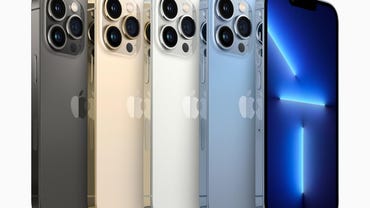
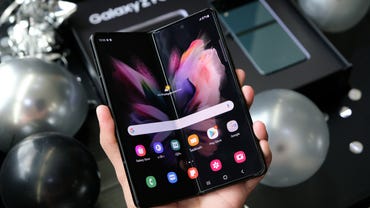
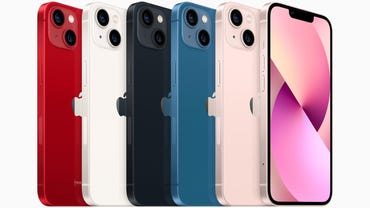
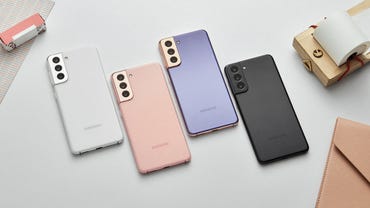
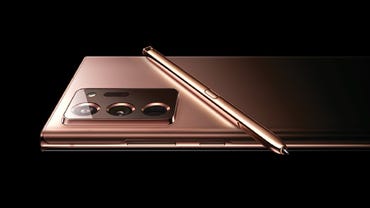



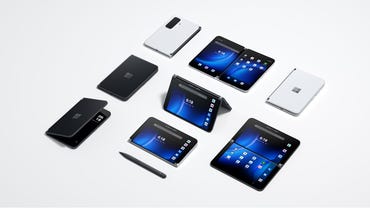

0 Comments